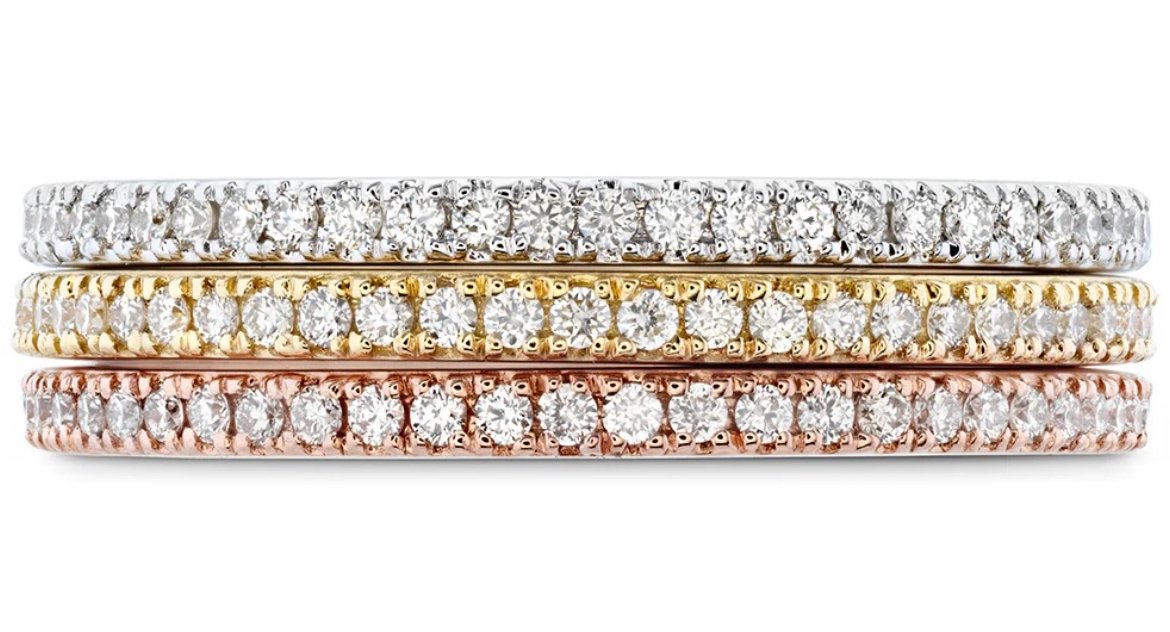Precious Metal Types, Colour, and Purity
METAL TYPES
A common question I’m often asked is “is platinum better than gold?”. In all honesty, there is no right answer, because it all depends on what you’re looking for, what your budget is, and whether or not you’re happy to regularly maintain your jewellery.
Both gold and platinum are precious metals that are regularly used to make beautiful pieces of jewellery such as diamond engagement rings, wedding bands, bracelets, pendants, and earrings.
METAL COLOURS
In its natural form, yellow gold has a distinct yellow/golden color that makes it so appealing. However, white gold and rose/pink gold are also an increasingly popular choice.
White gold is created by mixing gold with white metals such as silver or nickel and is coated in rhodium. As a result, it takes on a very different appearance from the traditional yellow.
Rose gold follows a similar process; however, the alloy will also consist of copper and sometimes palladium to give the gold that warm pink/rose tone.
METAL PURITY (gold)
Gold is typically measured in terms of its purity, expressed as a percentage of gold per 100 parts of metal. The most common purities for gold are:
•24K - 100% pure gold
•22K - 91.67% gold, 8.33% other metals
•18K - 75% gold, 25% other metals
•14K - 58.33% gold, 41.67% other metals
•10K - 41.67% gold, 58.33% other metals
Higher purity gold is softer (often too soft in the upper ranges) and more expensive, while lower purity gold is stronger and less expensive. There is a misconception however between the higher the purity, the “better” the gold. This is false. 18K is typically the highest purity gold used in jewellery, with 14K and 18K being the recommended purity for most applications. A lot of the choice in using a particular gold will come down to it’s preferred colour or hue (eg. 14K yellow gold can be preferred over 18K on account to it’s softer hue. More of a “champagne” gold).
METAL PURITY (platinum)
Platinum used for jewelry is graded based on its purity, expressed as parts per thousand (PPT). The most common grades for platinum are:
•950 Platinum - 95% pure platinum, 5% other metals (most common)
•900 Platinum - 90% pure platinum, 10% other metals
•*Investment grade platinum - 99.95+% pure platinum (and not suitable for jewellery applications in its non-alloyed form)
Platinum is valued for its rarity, durability, and white color, making it a popular choice for fine jewelry. It is also hypoallergenic and does not tarnish or fade, making it a suitable choice for people with sensitive skin. It is however quite malleable and not practical in all applications. The higher the grade, the higher the price and the more precious the jewelry is considered to be (however 950pt is the “platinum standard” for platinum jewellery.

